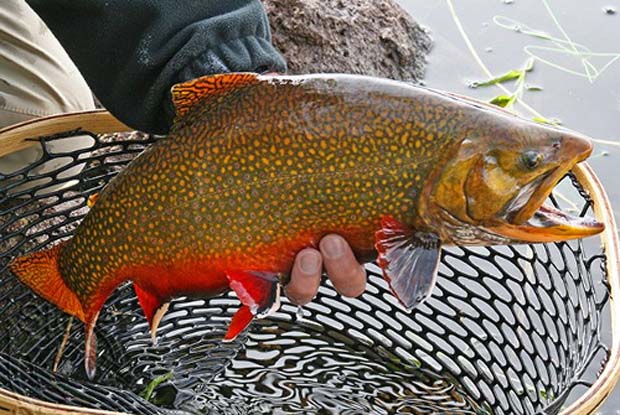[dropcap]T[/dropcap]here is some good that comes out of the wooly adelgid infestation that is decimating the hemlock population in the South Carolina mountains, according to according to Charles Sowell, writer for the Greenville News. He says that the dead trees are helping to reestablish South Carolina’s population of Salvelinus fontenalis, or brook trout. According to Sowell, it’s not just any brook trout, either.
These are distinctive fish. South Carolina natives that are genetically believed to be at least slightly distinct from the northern brook trout that have been hauled down from the northeast for generations to repopulate the stream systems long ago decimated by logging, overfishing and the replacement of natives by rainbow and brown trout.
The supposed role the dead hemlocks are playing occurs when SC DNR biologists saw the trees onto chunks that are used for cover by the fish in the largely sterile streams which are the perfect temperature, yet are shallower that the fish need. Felled hemlocks in streams provide more depth. Additionally, the new structure and the fish get some cover from predators. It appears that this works, as brook trout can be found all over the Chattooga basin.
The program has been so successful that DNR is now working at reestablishing native brook trout populations in the Jocassee Gorges area. Those streams are not yet announced and won’t be until the fish are established. King Creek is one of the first streams that DNR and TU renovated. It flows into the Chattooga just down- stream of the Burrell’s Ford Bridge and below a stopping waterfall on the creek.


